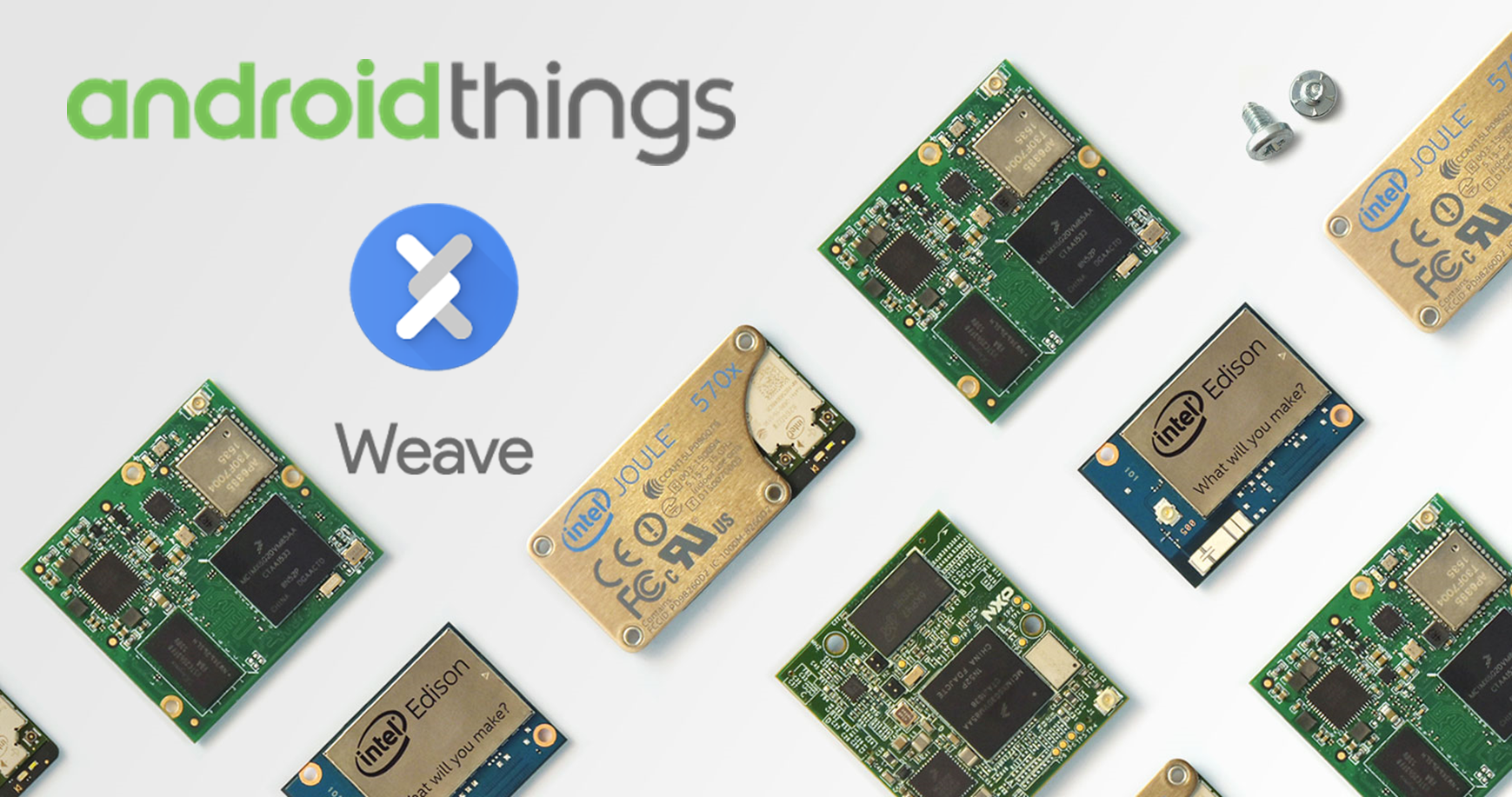
The Internet of Things or IoT seems to be the next big platform that everyone is chasing. Back at IO 2015, Google introduced Brillo and Weave as their two-part IoT solution: Brillo was a paired back IoT OS based on Android and Weave was a cloud-based communication protocol for the IoT. Today Brillo has graduated from a project to a full blown Google Service, called Android Things.
Android Things brings with it the power and familiarity of Android including Android Studio integration, Android SDK, Google Play Services, Android API’s and Google services. Developers familiar with Android development will be able to seamlessly pick up Android Things development and start working on projects.
Android Things is a developer preview for now with Google planning on adding additional features in the coming months including infrastructure for securely pushing regular OS patches, security fixes, and your own updates, as well as built-in Weave connectivity and more.
For developers wanting to get right to work building IoT hardware, there are several turnkey solutions available to streamline the process from prototyping to full stack production all using the same support resources. This will reduce the overhead for developers to go from prototype to market and perhaps make actually IoT hardware a reality. Qualcomm has already announced their support for the platform stating the Snapdragon chipsets will be compatible with the new platform.
Obviously, with Google Home and the Google Assistant Google is anxious to both get more ‘Google compatible’ IoT solutions into the market. Strangely however according to the FCC documents the Google Home doesn’t seem to support the 802.15.4 (thread) radio frequency that GOogle’s Weave protocol was announced as using. As such it seems that you will either need a Smartphone hub or devices that con directly communicate over 802.11.
Google’s Weave platform provides device makers wit ha simple to use device schema that allows cloud integration and interoperability for control functions. With devices/ OEMs like Philips Hue and Samsung SmartThings already using Weave, and several others like Belkin WeMo, LiFX, Honeywell, Wink, TP-Link, and First Alert all implementing the protocol Google may even have a success on their hands, even if success is only measured by interoperability.
Google also announced that they are amalgamating the Google Weave and the Nest Weave protocols into a single standard, hopefully, this is the last of Tony Fadell’s hubris coming to an end.
The real test here will be for products and services to come out using the Android Things/ Weave platform. With Google adopting a much tighter control of the underlying platform developer scan focus just on delivering their services. Here’s hoping for a very IoT filled Google IO 2017.





Three tiny typos:
Paragraph 5, 2nd last sentence: GOogle’s Weave protocol
Paragraph 5, last sentence: that con directly connect
Paragraph 6, 1st sentence: makers wit ha simple
So it sounds like it’ll all work with Zigbee which is why smartthings works with it.
Re Google home, it will speak to a smart hub like Samsung smartthings and smartthings will do the heavy lifting for turning on lights etc.
There heaps of cool videos on Google Home integrating with Samsung smartthings quite nicely.
Bring on a Google IoT smart hub.